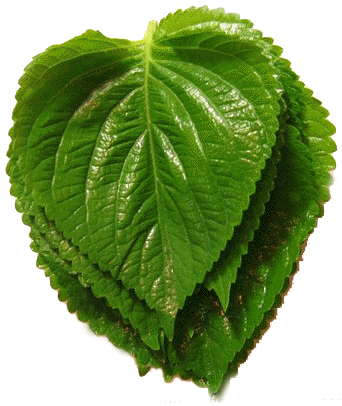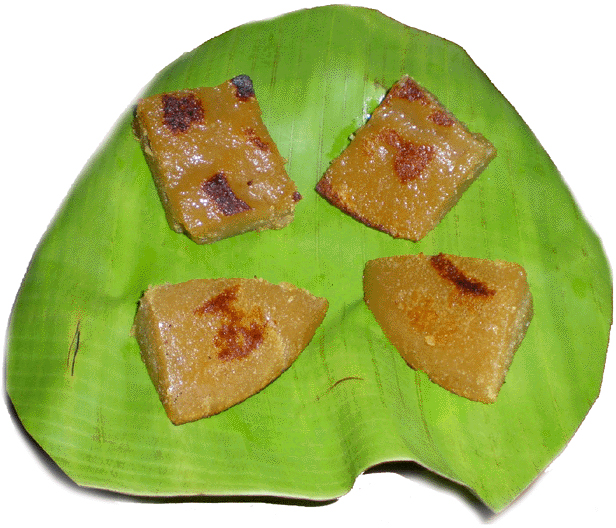
|
|
|
|
BY: SUN STAFF

Lotus Leaves Jun 12, 2010 — CANADA (SUN) — A journey through India: border to border, bhoga to prasadam. In addition to their functional use as serving plates, the leaves of banana plants make an excellent wrapper for foods that can be steamed, baked or grilled. As we demonstrated with a few recipes yesterday, almost any conceivable foodstuff can be wrapped up in banana leaves and cooked. Likewise, foods can be rolled into packets made from all sorts of edible or food-friendly leaves. And, their use extends beyond simple wrappers – they can even be used as fresh, organic 'frying pans'.
In the following recipe for Cholkya Vayli Bhakri, a Konkani specialty of rice roti on banana leaf, you'll find a method for cooking with leaves that can be used with banana, lotus, jackfruit, taro and sesame leaves, among others. Cholko means 'a piece of leaf', vayli means 'on top of', and bhakri means a fried roti or bread that's grilled on a leaf.

Cholkya Vayli Bhakri

Sesame Leaves Other batters you might try are those that are leavened, e.g., with baking powder; idli or dhokla types batters, or several of the batters described in our segment on Bataka (dumplings). As we mentioned yesterday with regard to banana leaves, when many 'cooking leaves' are heated, some constituent element generally imparts flavor and aroma to the food, whether it be through softening of a natural wax or infusion of the leaf's spice, sweetener, or acid. The same principles described above also come into play when leaves are used in one of the most ancient cooking methods known: pit roasting. Before the modern era, one of the favored methods for slow roasting was to dig a pit in the earth, lining it with aromatic leaves that would impart a particular flavor or other benefit like moisture, aroma, medicinal or nutritional value. In the bottom of the earth pit a good fire would be built on top of rocks, then allowed to burn down to embers. The embers would be removed, and a thick bed of leaves (all food-friendly!) would be placed on top of the hot rocks. Foods like root vegetables or fruits would be layered on top, then more leaves, food, etc. A covering of dirt would be placed on top, and sometimes a second fire was built. The pit would then be left for anywhere from 12 to 36 hours. When the foods are removed from the roasting pit, they're incredibly well cooked – slightly caramelized, soft but firm, and loaded with the flavor and scent of the leaves. Among the many benefits of this cooking method is that with foods having harder to digest carbohydrates, like some root vegetables, the constituents are converted to a more usable and tasty fructose by the slow roasting. While the ancient method of pit roasting isn't associated with traditional Krsna prasadam, which wouldn't be cooked in earth (or a dirty place), the principles can still be applied to baked goods that are oven or pot roasted over embers. So many flavorful and aromatic leaves can be used. Some, like curry or bay leaves, are simply used to flavor the roasted vegetables, while other leaves are cooked and eaten directly. The leaves of Taro or Jackfruit can be used this way. Vegetables like potatoes, eggplant, tomato, okra or peppers can be layered between the leaves, which will impart their nice flavor to the foods, and the leaves also serve as a cooked green. The thin, heart-shaped leaves of the taro have long fleshy stems. They taste much like spinach, and are cooked in just the same way as spinach. Eaten raw, taro leaves would cause your throat to scratch, so they must always be cooked first. They're wonderful in dahls and soups, wet sabjis, or as a side green leafy dish. Tender jackfruit leaves and the young male flower clusters of jackfruit are wonderful, cooked and served as vegetables. You can prepare jackfruit leaves just as you would spinach or cabbage. The large leaves make excellent food wrappers and like banana, can be fastened together for use as leaf plates. 
Jackfruit

Taro Leaves
| |